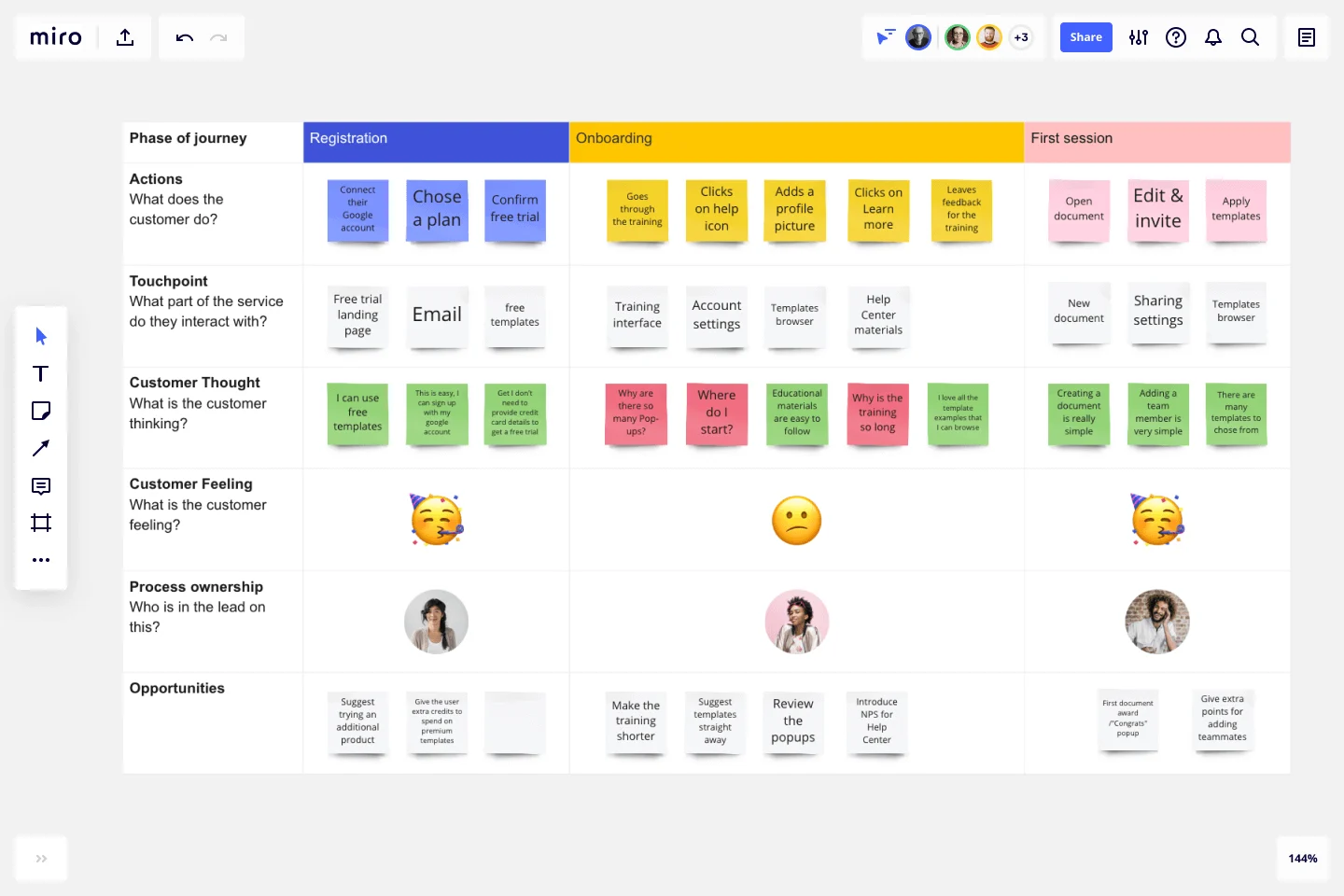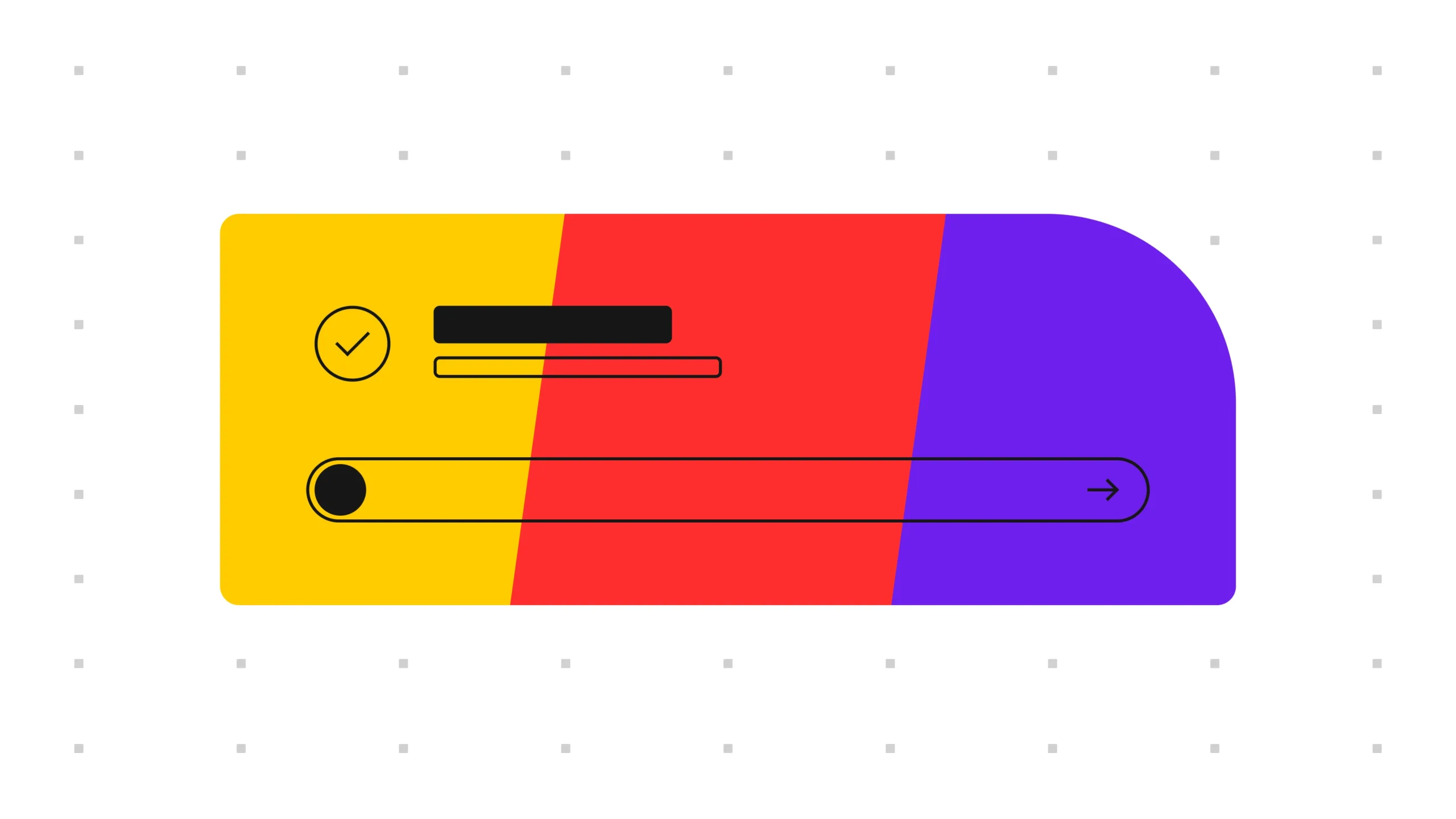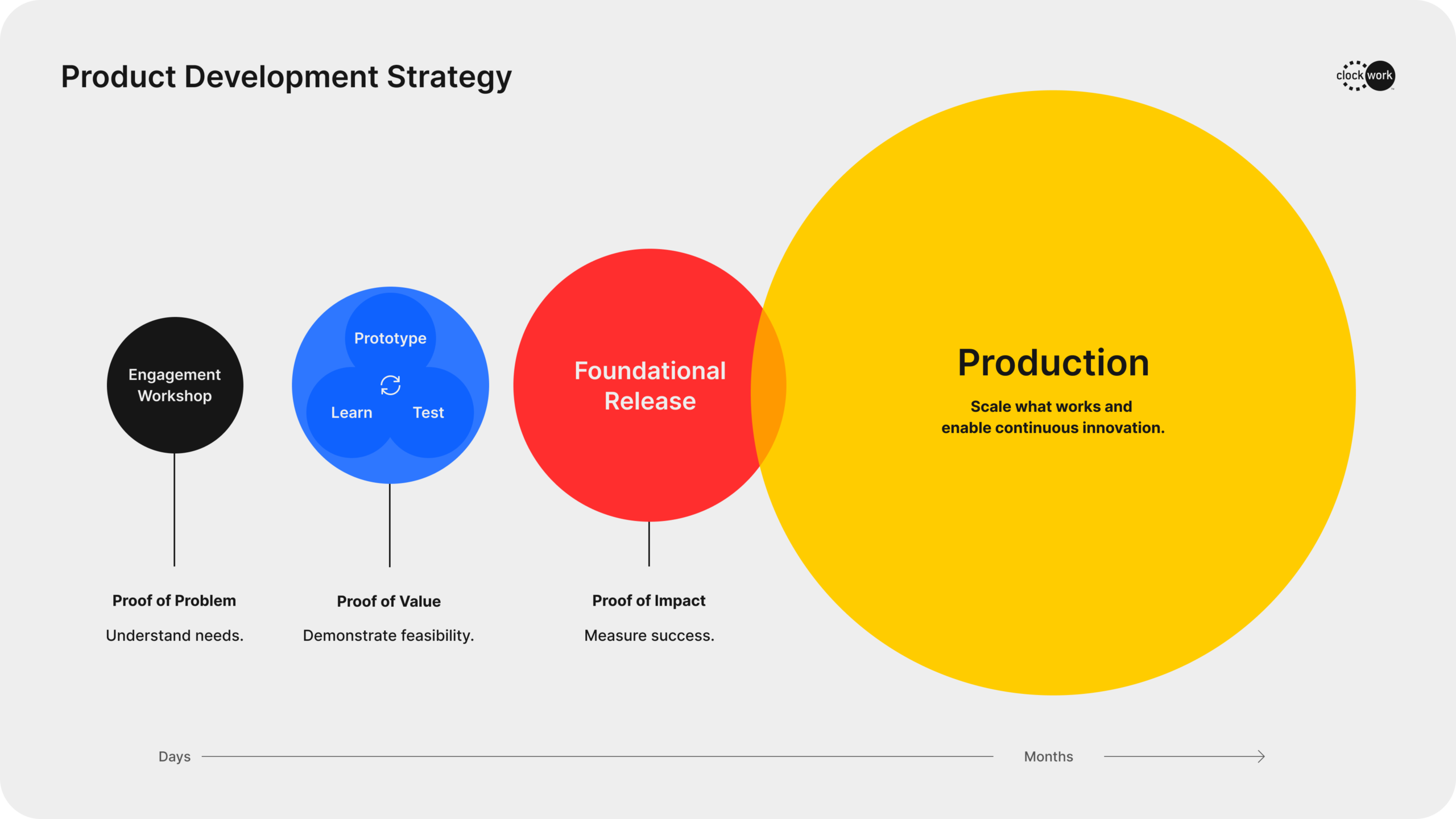What is a journey map and how will it help me understand the user?
A journey map is a visual representation of the steps someone takes when trying to achieve a goal. Usually, it includes information on their actions, touchpoints, feelings, successes, and pain points as they move through an experience.
Journey maps are a powerful experience design tool because they help show a customer’s end-to-end experience across multiple touchpoints such as your website, app, customer service calls, and perhaps your brick-and-mortar store. It’s important to map the whole journey, not just when someone interacts with your website.
A journey map is more effective when it’s rooted in research. It can be a helpful exercise to create a theoretical journey map based on anecdotal context or organizational knowledge, but a journey map is truly impactful when it’s driven by data. Data can come in the form of analytics, focus groups, user interviews, or any number of user research methods.
Why should I create a journey map?
Journey mapping is always a good idea, but there are some scenarios you might encounter that clearly point to a need to create one:
- You need to understand and address your customers’ needs or your team needs to align on the steps a user takes in a given process.
- Your team or organization needs a shift in perspective to be customer-first.
- You need to better understand a data point, such as a drop in traffic to a specific page or area of your site.
- You are planning on redesigning a part of the current experience or process. Journey maps help to de-risk your ideas (e.g. the product or service you decide to create, the updates you are proposing to your product, etc.). The data you gather when creating a journey map significantly increases the chance that you’ll build something that actually helps users accomplish their goals, meets their needs, and works with their attitudes and behaviors.
How do I create a journey map?

You’ll need to align on your objectives and gather data from your users. Next, you’ll put the data into a format that shows steps in a user’s journey and what happens at each step.
Depending on your time, budget, or resource constraints, you may need to scale these efforts to feel realistic for your company.
Here’s how we do it at Clockwork:
- Determine the business need for a journey map and gather organizational support
- Identify your audience, align on your assumptions about them, and narrow the focus of your journey map to one specific user goal or task
- Plan your research methodology and review existing research
- Conduct research
- Synthesize research and start sharing key themes with stakeholders
- Use the data you collected to map out the user’s path (we use tools like Miro or Figma for this — both have templates available)
- Identify and prioritize opportunities
- Share your findings and gather support and buy-in for next steps
Read about how we guided journey mapping for a Fortune 500 client and expanded their in-house UX practice.
What to do after journey mapping
Have you started on your journey mapping process? Do you want to take it to the next stage? Clockwork can lead your team in:
- A workshop to prioritize the opportunities identified
- A needs statement workshop to hone in on the user need you’re meeting
- A big idea generation workshop to brainstorm ideas to meet those needs




